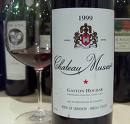 Like a switch triggered by the passing of a restaurant wine list, my gears go into swift motion, “What’s the right budget for our group, even though I am hosting? Was this the vintage I had tried? Where’s the value on this list? The cheapest wine is $50 and it is insipid swill. There are so many mediocre wines around and over $100, I don’t see any quality in this range…look at the group over $300…there’s the trove of treasures, like sitting ducks, easy to shoot, overpriced, no challenge, keep looking! What about all these wines I never heard of?”
Like a switch triggered by the passing of a restaurant wine list, my gears go into swift motion, “What’s the right budget for our group, even though I am hosting? Was this the vintage I had tried? Where’s the value on this list? The cheapest wine is $50 and it is insipid swill. There are so many mediocre wines around and over $100, I don’t see any quality in this range…look at the group over $300…there’s the trove of treasures, like sitting ducks, easy to shoot, overpriced, no challenge, keep looking! What about all these wines I never heard of?”
The right question for me when I am locked into restaurant mark ups for recent releases and bloated storage margins on older vintages is always, “Which wine will offer the best pleasure-to-price relationship?” If you find yourself relating to that vignette, then let me share a way to navigate through these situations.
I have recently been testing a new strategy by asking knowledgeable front of the house staff a powerful question:
“What is the best value on your list? Price does not matter, high or low. I don’t think I want the most expensive or the cheapest, although if that is what you think is the best value, I would like that recommendation. I need your experience with this list to help me figure out what wine will offer me the most pleasure relative to its price. Again, the amount I spend does not really matter, just a great wine at a great value compared to the level of enjoyment it provides is what I am looking for.”
Using grace and sensibility in handing over responsibility gains respect from your dinner companions and wait staff. It’s a thoughtful question, and if posed with sincerity I have found it to be a successful strategy that drives strong outcomes most of the time.
Recently, I tried this at a spot where I had little first hand knowledge of any of the wines on the list. With friends and  family, I booked a table at Zaytinya , Jose Andres’ fully recommended and excellent Mediterranean small plate spot in Washington, DC. The entire wine list is made up of Lebanese, Greek, and Israeli wines. As I predicted before opening the list, the only wine I knew was the somewhat famous and very rewarding Château Musar which is released late since it is aged 12 to 15 months in oak and blended in its third year, before being bottled and aged for four years before releasing. And there it was, predictably anchoring the bottom of the Lebanese section with price tags between $110 for the ’99 to $272 for the ’78. Tempting for sure…a wonderful producer that is a value at retail, not here, for the
family, I booked a table at Zaytinya , Jose Andres’ fully recommended and excellent Mediterranean small plate spot in Washington, DC. The entire wine list is made up of Lebanese, Greek, and Israeli wines. As I predicted before opening the list, the only wine I knew was the somewhat famous and very rewarding Château Musar which is released late since it is aged 12 to 15 months in oak and blended in its third year, before being bottled and aged for four years before releasing. And there it was, predictably anchoring the bottom of the Lebanese section with price tags between $110 for the ’99 to $272 for the ’78. Tempting for sure…a wonderful producer that is a value at retail, not here, for the  usual quality offered.
usual quality offered.
Still, feeling adventurous and looking for value through our now trusted server, I framed my  question and after some thoughtful conversation the 2007 barrel fermented assyrtiko from Hatzidakis Winery for $58 was presented. This Assyrtiko, an indigenous grape from the island of Santorini, proved to be a wonderful choice that had citrusy and melon tones with strong acidity that was rounded out nicely by the barrel fermentation. What a find, what a surprise, and a thankful appeal to my personal fixation over island produced wines.
question and after some thoughtful conversation the 2007 barrel fermented assyrtiko from Hatzidakis Winery for $58 was presented. This Assyrtiko, an indigenous grape from the island of Santorini, proved to be a wonderful choice that had citrusy and melon tones with strong acidity that was rounded out nicely by the barrel fermentation. What a find, what a surprise, and a thankful appeal to my personal fixation over island produced wines.
Sticking with a working strategy as we moved into the reds, I pitched my question again and was recommended a 2005 Petit Sirah (80%)/Zinfandel(20%) blend in a similar price range from upper and lower Galilee fruit produced by the Israeli winery Recanti. The recommendation offered wonderful insight into the Mediterranean interpretation of two of my favorite local grape varietals. The wine had the berry fruit qualities of ripe zinfandel along with a mocha and nutty flavor to accompany it.
Great wine discoveries combined with a fantastic selection of Mediterranean tastes on small plates from all over the region, we successfully navigated unfamiliar territory and had a magical evening out with friends and family. Ask the question and who knows, you might travel beyond your wine prejudices to discover expressions of land and sea you’ve never visited at unexpected value price points.
